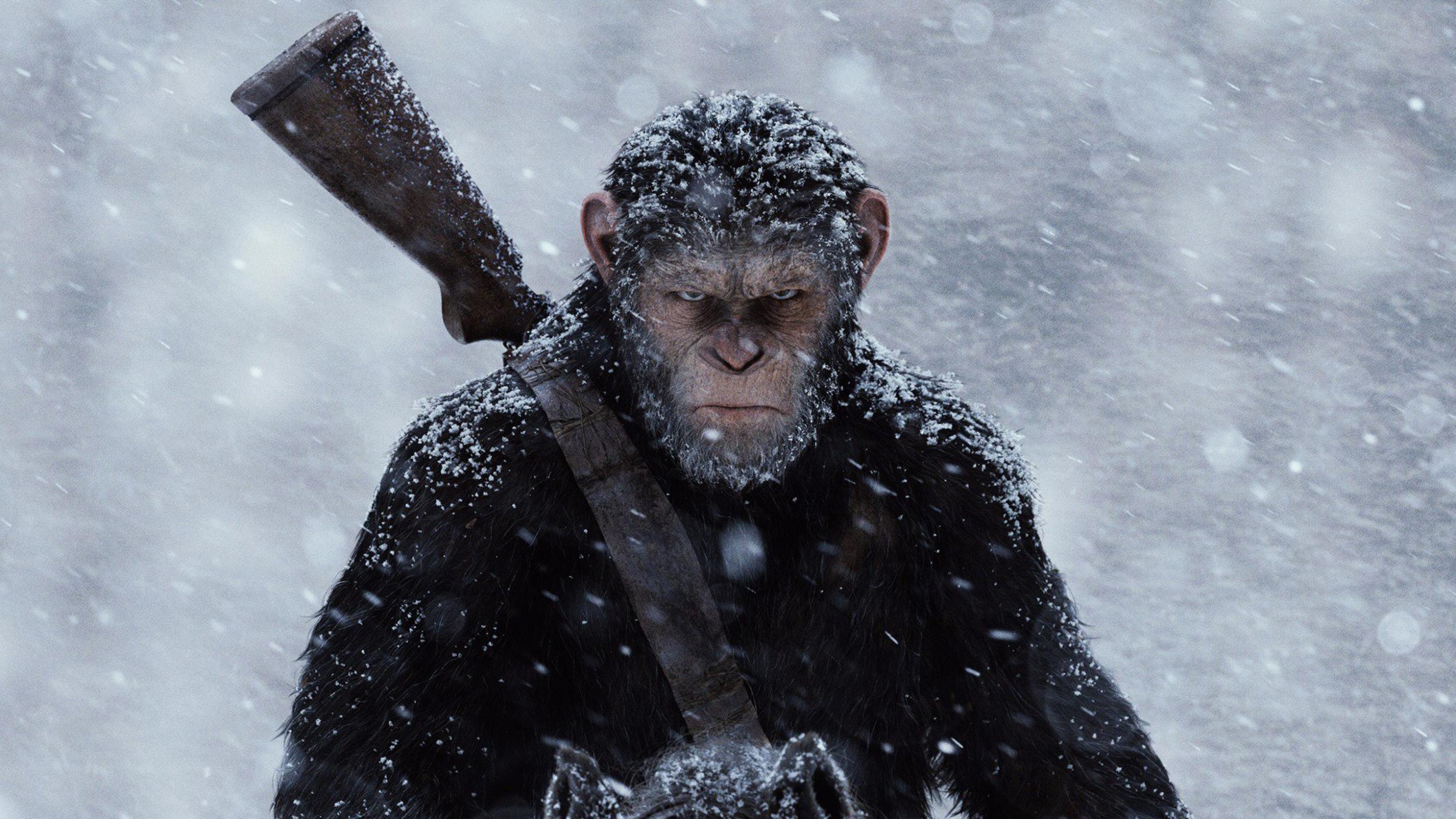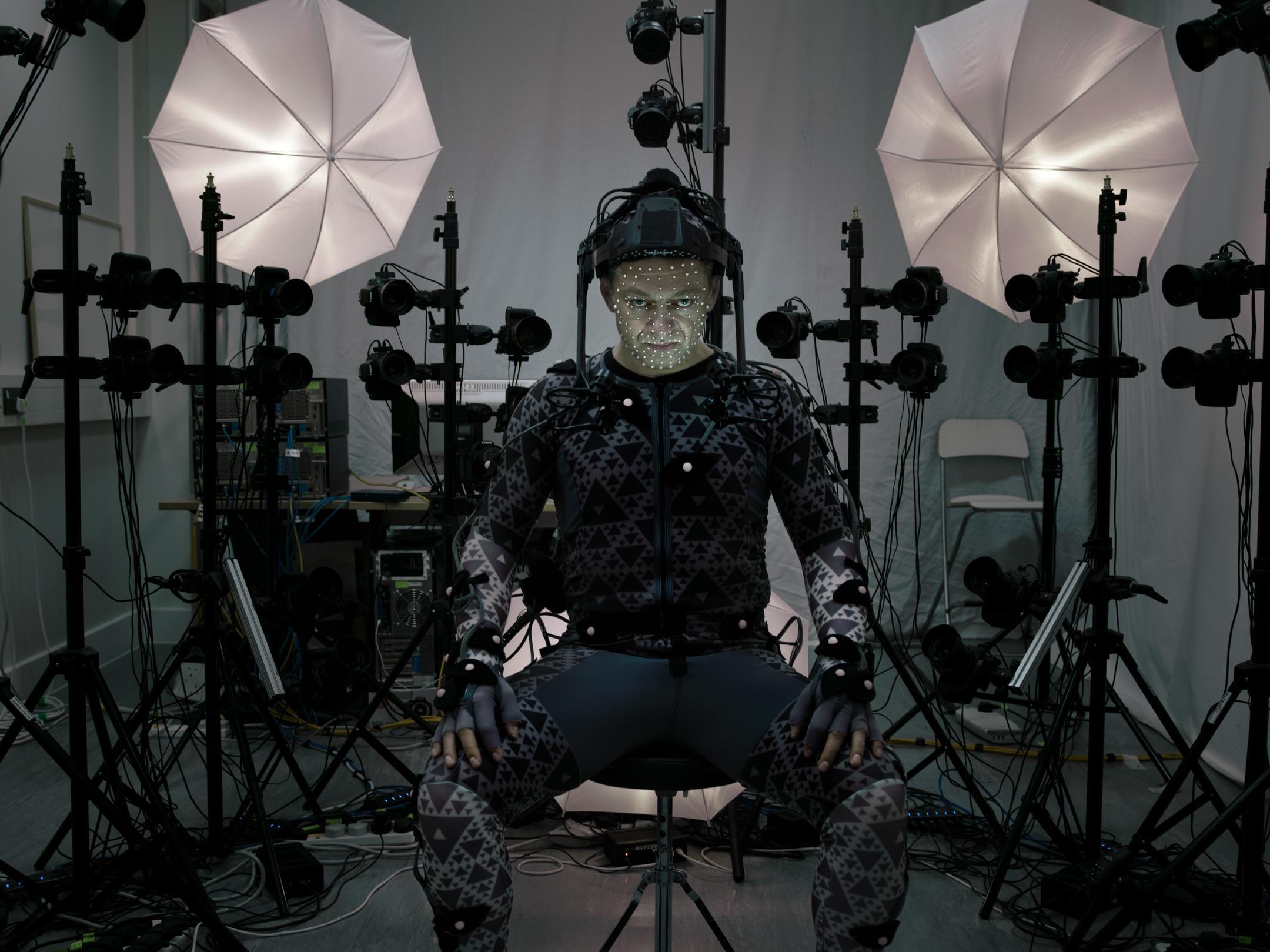Andy Serkis: the War for the Planet of the Apes star on how performance capture is 'the end of typecasting'
The British actor has played Gollum, King Kong and Caesar, the ape at the centre of the Planet of the Apes franchise – and explains why he considers performance capture to be no different from any other kind of acting

Your support helps us to tell the story
From reproductive rights to climate change to Big Tech, The Independent is on the ground when the story is developing. Whether it's investigating the financials of Elon Musk's pro-Trump PAC or producing our latest documentary, 'The A Word', which shines a light on the American women fighting for reproductive rights, we know how important it is to parse out the facts from the messaging.
At such a critical moment in US history, we need reporters on the ground. Your donation allows us to keep sending journalists to speak to both sides of the story.
The Independent is trusted by Americans across the entire political spectrum. And unlike many other quality news outlets, we choose not to lock Americans out of our reporting and analysis with paywalls. We believe quality journalism should be available to everyone, paid for by those who can afford it.
Your support makes all the difference.The leader of the troops walks slowly through the ranks of soldiers, who part respectfully, as he looks at them with an expression that combines anger, pain and grim intent. But this isn’t a human commander. It’s Caesar, the ape who is the principal figure in 20th Century Fox’s Planet of the Apes franchise. The scene comes from the latest in the series, War for the Planet of the Apes, which has generated laudatory reviews.
In War, the fragile truce between humans and apes has given way, and we discover the sinister Colonel (played by Woody Harrelson), whose early actions set in motion a series of devastating events for both populations.
Caesar, the ape whose expressions we are watching via digital transformation as he reacts to the Colonel’s murderous deeds and musters his forces, is played by British actor Andy Serkis. In BoxOfficeMojo.com’s ranking of actors by their ticket sales, Serkis is in the top 30, outflanking Brad Pitt and Daniel Radcliffe, among other far more famous names. His films average $125m at the box office, more (by some distance) than those of Samuel L Jackson or Tom Hanks. He has been acting professionally for almost 30 years and has starred in numerous movies, some of them blockbusters like the Lord of the Rings trilogy, the 2005 King Kong, Star Wars: The Force Awakens and the Apes reboot.
Yet, for most moviegoers, Serkis, 53, is probably neither a household name nor face, since he has specialised for more than a decade in creating roles through performance capture – a complex technology that records the movement and facial expressions of human actors and then painstakingly renders them digitally to create fantastical characters, like Caesar, Gollum and King Kong.

Caesar, wrote AO Scott of The New York Times in a review of Dawn of the Planet of the Apes, is “a role that continues to redefine screen acting in the digital age. His facial expressions and body language are so evocatively and precisely rendered that it is impossible to say where his art ends and the exquisite artifice of Weta Digital, the special-effects company, begins.”
That ambiguity has been the source of much film-world controversy. A 2011 campaign by 20th Century Fox to have Serkis nominated for a best supporting actor Oscar for Rise of the Planet of the Apes has not persuaded the academy or other major groups that performance-capture acting is, as Serkis put it during an interview here last month, “no different” from any other kind of acting.
An actor in a performance-capture role receives a script, works on psychology, emotions and motivation, and goes on set to be shot in exactly the same way as any other character, he says. “That performance is used to cut the movie, and it’s that performance that creates emotion, pace and drama. The visual effects render the character, just like putting on makeup, except here it happens after the fact. It’s digital makeup if you will.”
Serkis adds that he did not want to deny the “brilliance” of the visual-effects team. “But the awarding bodies should not discriminate about this being different,” he says. “If they don’t think Caesar is good, that’s fine, but a different issue.”
Serkis has dark curly hair, a compact muscular frame and a straightforward, friendly manner. He is married with three children and could be your nice next-door neighbour. Except that your neighbour probably hasn’t been embodying a chimp for the past five years, nor starring as Supreme Leader Snoke in Star Wars and Ulysses Klaue in Avengers, while also directing a movie (Breathe) scheduled for release in the autumn.

Watch Apple TV+ free for 7 days
New subscribers only. £8.99/mo. after free trial. Plan auto-renews until cancelled

Watch Apple TV+ free for 7 days
New subscribers only. £8.99/mo. after free trial. Plan auto-renews until cancelled
With producer Jonathan Cavendish, he also has his own studio, Imaginarium, which specialises in performance-capture techniques for use onstage and in other forms of performance as well as on film. “It’s been a mental year,” Serkis acknowledges.
He did not plan to be an actor, he reveals. One of five children, he grew up in a west London suburb; his father was an Iraqi-born gynecologist and his English mother a teacher working with disabled children. In his teens Serkis wanted to be a painter, and after school began a degree in visual arts at Lancaster University. His curriculum required an additional course, and he chose theatre studies, thinking he would do “posters and sets and stuff”.
He was soon acting in student productions and was hooked, rapidly switching focus and working for several years in touring theatre after graduating. “Fourteen plays back to back, turnaround every three weeks, completely classic old-school repertory training,” he recalls.
He was living in London, getting “decent” parts in films and on television, when his agent called about auditioning for Gollum in Peter Jackson’s The Lord of the Rings: The Fellowship of the Ring. Initially, Serkis balked: “I said, no, I want to play a real role. But I went to the audition and thought, I can’t just do the voice, I’m not that sort of actor, and I climbed up on a chair and made a strangulated cat sound that made the whole body ripple. Eventually I got a call saying, ‘Peter wants to meet you’.”

Jackson explained to Serkis that he was thinking about using the new technology of motion capture for the Ring movies and wanted the actor playing Gollum on the set. “I found myself flying to New Zealand in early 2000, with no real idea of how it would work,” Serkis says. “So I just went about creating the character in the way I would for any role; what drives him psychologically, physically, emotionally?”
The Rings trilogy, he says, ultimately represented a “benchmark change” for performance capture and computer-generated imagery.
He adds: “We weren’t the only people doing it, but everyone seems to agree that Gollum in The Two Towers was probably the first CG character where a single actor was providing authorship of the role.”
After working on the Ring trilogy for three years, Serkis says, he assumed his life would return to being a “normal” theatre and film actor. Then Jackson asked if he would like to play King Kong. “That moment was an epiphany because I realised how huge performance capture could be,” he says. “I had played a 3ft hobbit and now a gigantic ape. The actor in the 21st century has a tool that enables you to totally transform into anything you want to play. It is the end of typecasting.”
A few years later, Weta, the digital-effects company that had worked on the Ring trilogy and King Kong, suggested Serkis to producer Peter Chernin when he was developing Rise of the Planet of the Apes.
“We really had no idea how we were going to do it,” Chernin says in a telephone interview. “We looked at performing chimps, at animatronics. Weta said, ‘Frankly, you would be crazy if you don’t get him. There is no one better’.”
Serkis says that he wasn’t initially sold on playing another ape character but was eventually won over by the script and the way the film showed the action from Caesar’s point of view. While preparing for the role, he began a daily regime of working with the arm extensions he uses in the films and spent “a lot of time quadrupedding, climbing around, brachiating”. (Asked if the role was hell on the knees, he laughs. “You take a lot of battering physically.”)
“I’ve played this character from an infant, which is very rare,” he says. “He essentially goes from chimp to human, starting to use sign language, becoming more upright.” He adds: “It’s a subtle balancing act, because if you go too far on the human end, you can sound like an actor in an ape costume.”
Matt Reeves, who directed Dawn and War, says he was very conscious of maintaining that balance. “When I saw Rise, I was blown away by the level of emotional identification I had with Caesar, the most I’d ever had with a CG character,” he says. “My approach was to start in the world these apes had created, the dawn of intelligent apes. Their speech, their movement, comes from a place of emotional urgency, and it can’t be casual.”
It has been fascinating, Reeves says, to discover that the technology is essentially about recording those nuances. Serkis isn’t just one of the greatest performance-capture artists, he says. “He is just one of the best actors I’ve ever worked with.”
War for the Planet of the Apes is out now
© The New York Times
Join our commenting forum
Join thought-provoking conversations, follow other Independent readers and see their replies
Comments